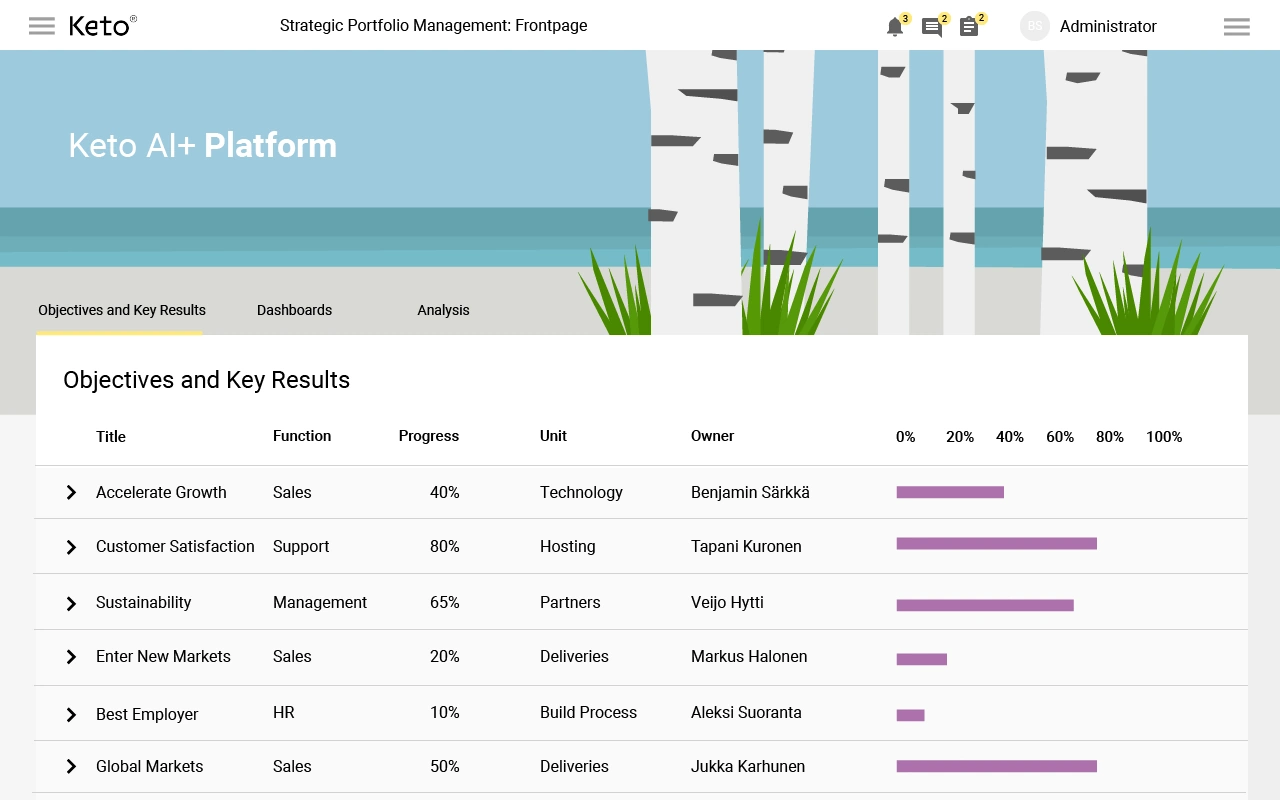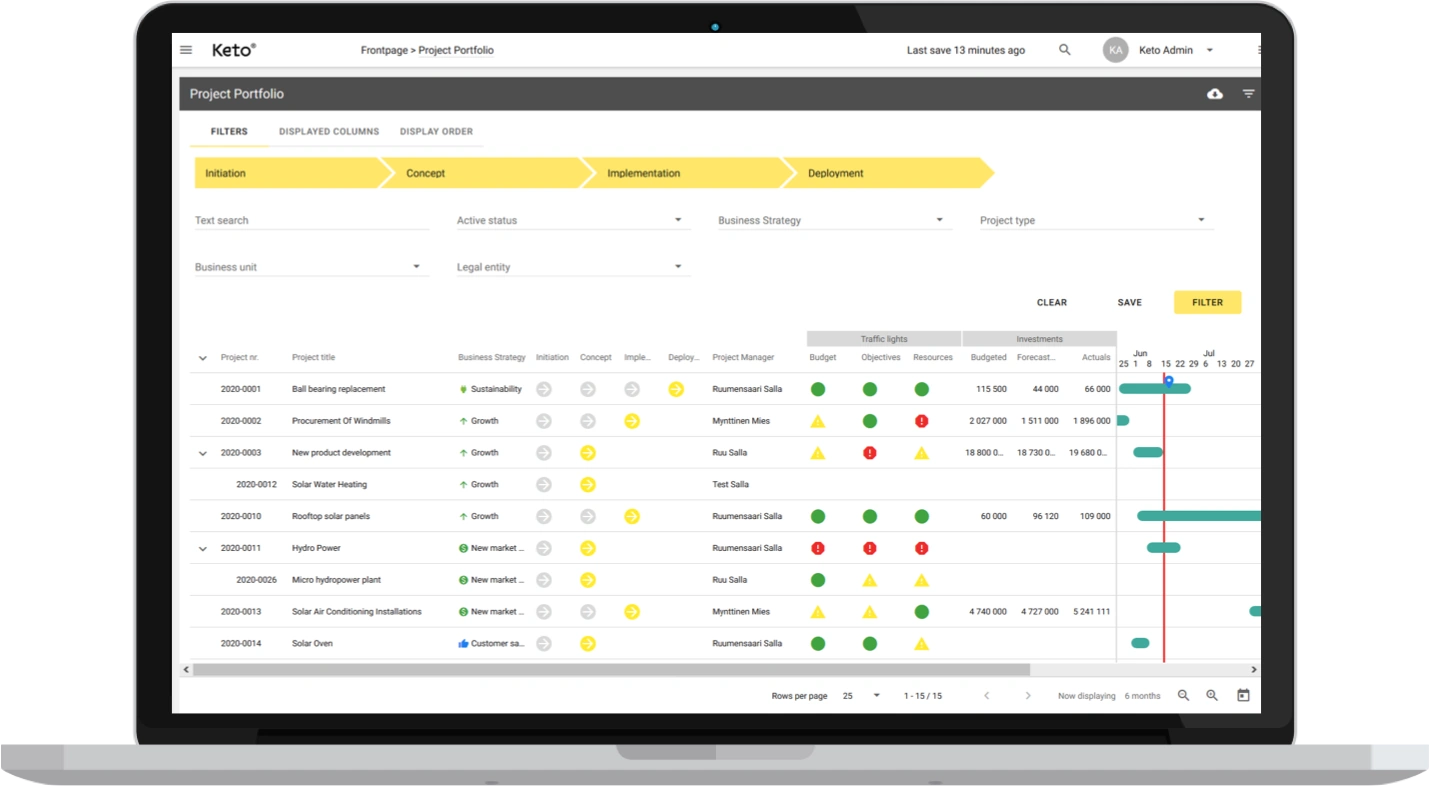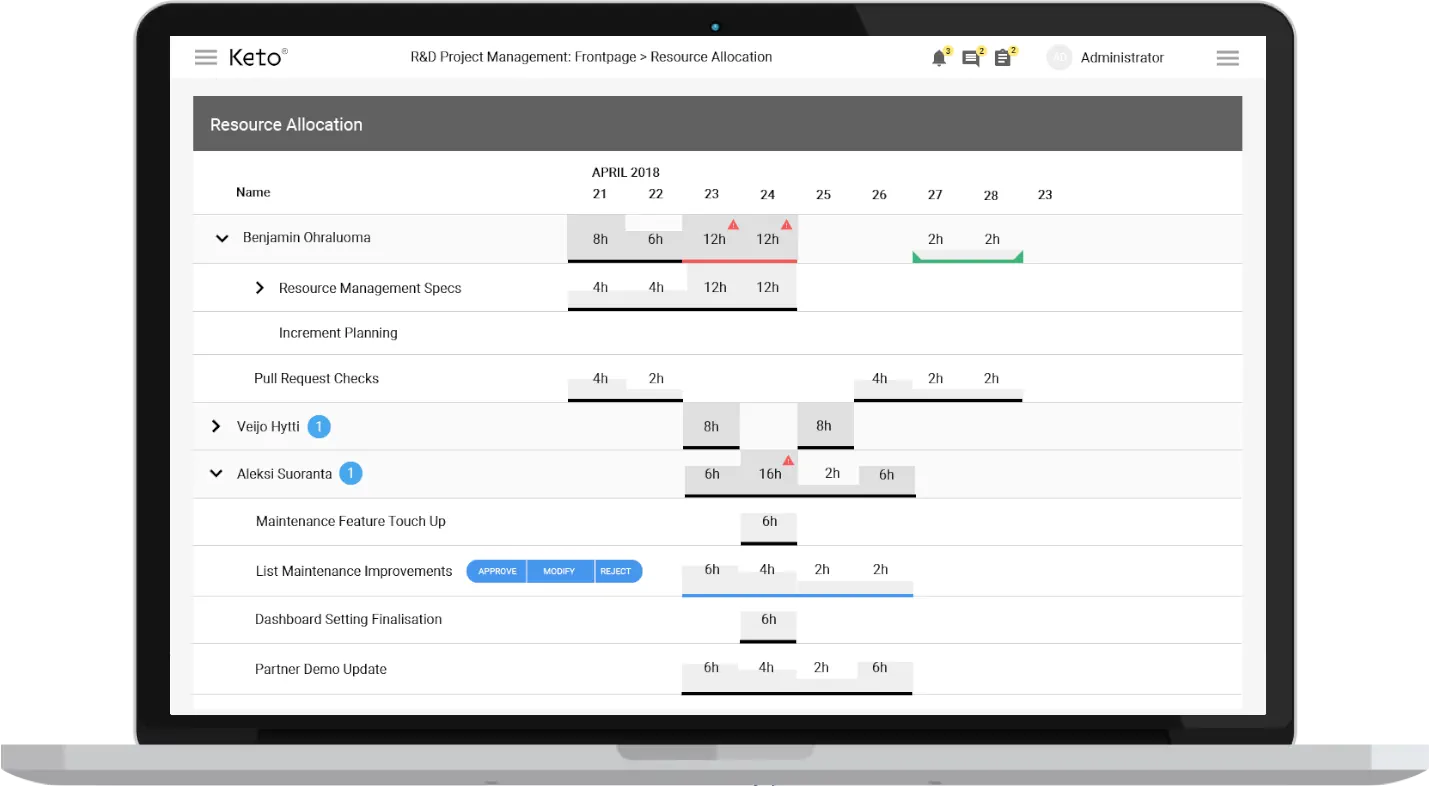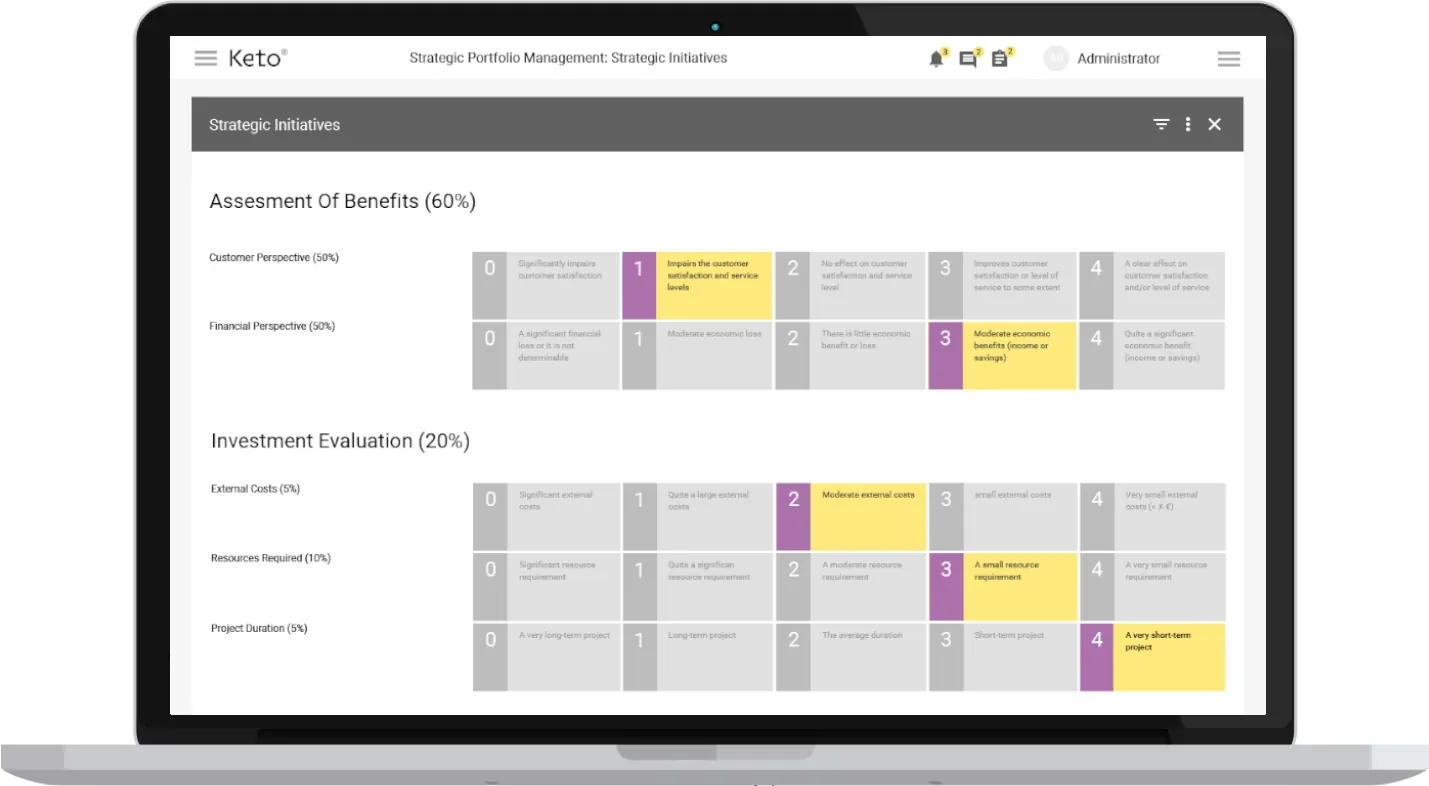
What is Strategic Portfolio Management (SPM): A Comprehensive Business Execution Framework
Strategic Portfolio Management (SPM) represents a comprehensive business execution framework that synchronizes the planning, funding, and execution of all discretionary investments within an organization. More than a mere strategy, SPM offers a paradigm shift from the traditional methods of managing business portfolios.
Essentially, SPM aligns planning and execution in the grand scheme of business operations. It bridges the gap between strategy and execution by prioritizing the alignment of business strategy with work, empowering decision-makers to effectively plan, deliver, and track value across various methodologies and structures.

Introduction to Strategic Portfolio Management (SPM)
Within the SPM framework, every project, program, product, or capability undertaken by the organization should align with, and contribute to, the broader strategic objectives. The fundamental objective of SPM is to ensure the organization’s strategic alignment and business efficiency.
This approach requires a deeper understanding of portfolio optimization, investment strategy, risk management, and diversification. It calls for meticulous performance measurement to assess how different components of the business portfolio are contributing to the organization’s overall goals. Furthermore, effective SPM relies heavily on a dynamic investment portfolio, which adapts to the changing business environment while staying focused on the company’s broader objectives.
Strategic Portfolio Management goes beyond the financial aspect of capital allocation. It emphasizes the strategic planning of resources, the importance of financial analysis in decision-making, and the need for risk assessment in evaluating potential investment options. This comprehensive framework ensures that every decision taken, every investment made, serves the organization’s broader strategic objectives.
The Benefits of Strategic Portfolio Management
The adoption of Strategic Portfolio Management can provide numerous benefits for an organization. Understanding these benefits can help provide clarity on why SPM is becoming an essential component of modern business management.
Enhanced Strategic Alignment
One of the primary advantages of SPM is enhanced strategic alignment across all levels of the organization. It ensures that all investments and projects align with the organization’s broader strategic objectives, resulting in a more focused and coordinated approach to achieving these goals.
Improved Decision Making
SPM aids in improving the quality of decision-making within the organization. It offers a clear picture of the portfolio’s performance, enabling decision-makers to make informed choices regarding capital allocation, resource management, and strategic direction.
Effective Resource Utilization
Through SPM, organizations can make more effective use of their resources. It ensures that resources are allocated to projects and investments that align with the organization’s strategic goals, thus avoiding wastage and improving overall efficiency.
Risk Management
SPM provides a robust framework for risk management. By considering the risk associated with different investments and projects, organizations can mitigate potential pitfalls and better prepare for uncertainties.
Increased Agility
In today’s rapidly changing business environment, agility is crucial. SPM fosters an agile mindset by allowing organizations to quickly adapt their portfolio in response to changes in the business environment.
Better Performance Measurement
SPM offers a framework for better performance measurement. By aligning the portfolio with strategic objectives, it allows for a more accurate assessment of the portfolio’s performance in achieving these goals.
Enhanced ROI
By focusing on strategic alignment, effective resource utilization, and risk management, SPM ultimately leads to an enhanced return on investment (ROI).
In conclusion, the benefits of Strategic Portfolio Management extend beyond improved financial performance. By fostering strategic alignment, enhancing decision-making, and promoting efficient resource use, SPM contributes to an organization’s overall agility and competitiveness in the market. It’s an approach that can lead to sustainable growth and success.
The Confluence of SPM and Objectives and Key Results (OKR): The Pillars of Strategic Alignment
One of the key components of SPM is the Objectives and Key Results (OKR) framework, a goal-setting system that aligns strategic goals across the entire organization. By establishing clear and measurable objectives, OKRs ensure that each individual, team, and department works in harmony toward achieving the shared vision of Strategic Portfolio Management. This alignment guarantees every investment decision made aligns with the company’s broader goals, aiding in portfolio optimization, risk assessment, and portfolio evaluation.

Read next
Strategic Initiatives within SPM: Guiding Value-Driven Actions
Strategic initiatives, which are high-impact actions designed to achieve strategic goals, are another core element of SPM. These initiatives guide the allocation of resources and efforts, ensuring maximum value generation and strategic impact. They are the foundation for effective portfolio allocation and analysis, aiding in portfolio monitoring, and guiding investment policies to maximize portfolio performance.
Programme and Project Management: The Core of SPM’s Operational Excellence
Unlike traditional project management methods, SPM ensures all efforts align with the broader business strategy. This focus ensures the right projects are selected, prioritized, and executed, fostering organizational alignment and strategic success. The role of SPM in program and project management aids in effective investment allocation, helping to achieve optimal return on investment (ROI).

Financial Management in SPM: Optimizing Business Value
Financial management, another key component of SPM, ensures the alignment of financial resources with strategic objectives. It involves careful planning, controlling, organizing, and directing financial resources to maximize ROI and enhance business value. This component of SPM highlights the importance of financial analysis in investment decision-making, further reinforcing the essential role of strategic planning in portfolio rebalancing and portfolio tracking.

Capacity Management in SPM: Balancing Demand and Supply
Capacity management is a vital part of SPM, guaranteeing optimal resource utilization, from personnel to infrastructure and technology. By balancing demand and supply, capacity management ensures resources are allocated effectively in alignment with strategic objectives. This delicate balance aids in portfolio rebalancing, optimizing the utilization of resources for the greatest strategic impact.

Strategic Portfolio Management: A Blueprint for a Resilient and Agile Business
In essence, Strategic Portfolio Management is a cornerstone of business agility and strategic alignment. It’s about doing the right things – ensuring every activity, project, financial decision, and resource allocation serves the organizational goals. SPM is a blueprint for a resilient, agile business, providing the tools necessary to align an entire portfolio with strategic goals, driving value and fostering success.
SPM: Laying the Foundation for Future Success
No matter the size or scope of a business, SPM provides the structure, strategy, and alignment necessary to navigate the ever-evolving business landscape. It’s more than effective portfolio management; it’s about leading with knowledge and aligning every action with your strategic vision. With SPM, every decision, every investment contributes to the organization’s goals, propelling it toward a prosperous future.
Strategic Portfolio Management (SPM) offers businesses the ability to optimize their portfolio, manage risks, and plan strategically for the future. It ensures alignment across all levels of the organization, from high-level strategic planning to day-to-day operations. By understanding and implementing SPM, businesses can align their portfolio with their strategic goals, making informed decisions that enhance value, manage risks, and drive success.
These nine chapters together form a comprehensive guide to understanding Strategic Portfolio Management, its components, its role in organizations, and its long-term benefits. By the end of this guide, readers should have a solid understanding of SPM and how it can be used to align an organization’s strategic planning, risk management, and investment strategies, ultimately leading to a more successful, prosperous future.
Read next
